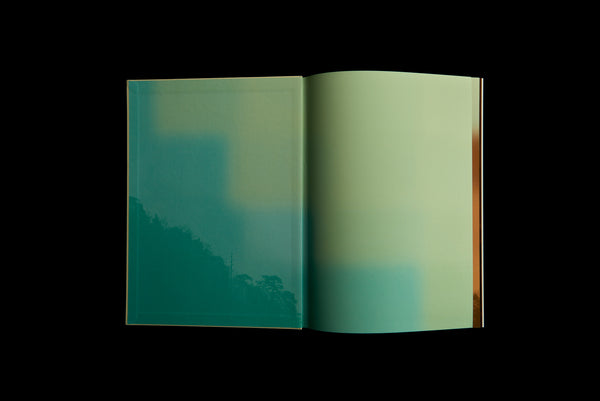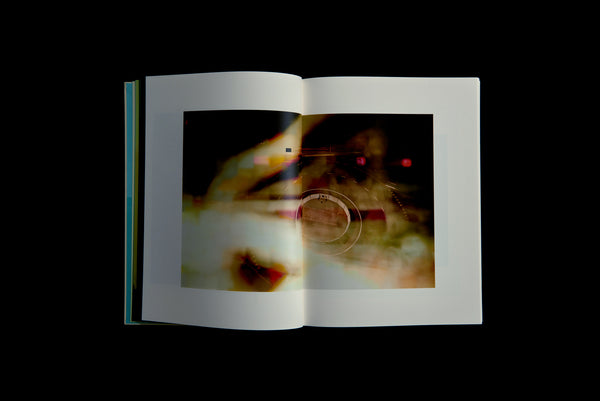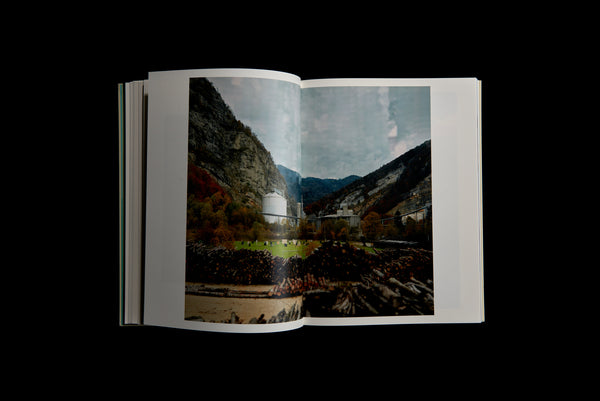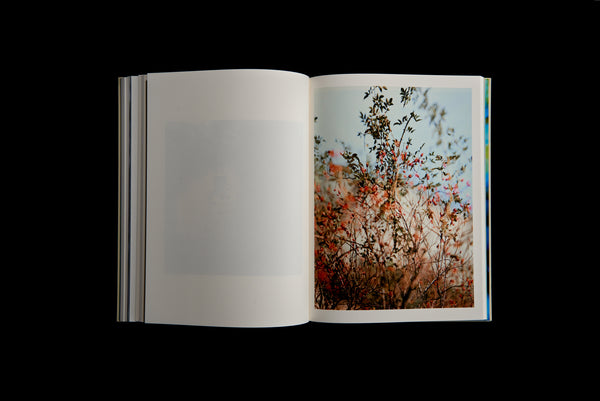







Rudolf Steiner
Ricochet
Vexer Verlag, Berlin — 2020
In his photo series Ricochet, begun in 2013, Rudolf Steiner navigates the fine line between romantically transfigured images of nature and the representation of an injured landscape. Ricochet assembles pictures that were taken in the hinterland of Biel/Bienne. These pictures do not strive for any kind of truth of nature or landscape, but were created at their core in cooperation with nature on the basis of the chosen shooting process. The pictures were taken with a camera robot, with the help of which a camera produces hundreds of individual shots of a motif, which are later joined together on the computer by a stitching program to form a single picture. Since the lighting conditions can change drastically during the long recording time of between 10 and 30 minutes and meteorological influences such as wind, fog, snow and rain also play a role, the image result can only be controlled or predicted to a limited extent. In addition, stitching can produce errors that influence the result. These influences and sources of error create unusual images in which the limits of conventional photography dissolve and expand.
"Ricochet" comes from French and means "rebound" or "bounce back" and is often used in connection with firearms or artillery. At first glance, a strange title for a series of landscape photographs. But the Biel artist and photographer Rudolf Steiner refers to a theory of perception propagated by Plato and later Euclid, which states that a "ray of vision" emanates from the moving eye and scans the world in the field of vision - like a blind man with his blind cane scanning the street in front of him, or like a scanner registering the visible line by line in order to output it as an image. This theory of the "ray of vision" seems rather absurd in modern physics, but is given a kind of late rehabilitation by the latest findings from eye movement analysis. And in a figurative sense it corresponds to the recording technique that Steiner uses to produce his pictures: with the help of a robot and a camera equipped with a very long focal length, he "scans" the landscapes around his studio in Rondchâtel near Biel in hundreds of shots, which he later assembles into a single picture on the computer.
Due to the long duration of the recording session, atmospheric influences such as wind, light changes due to clouds and fog are inscribed into the picture - the "visual ray" bounces off, the "ricochets" are recorded.
With this digital recording technique (and a book by Robert Walser in his pocket) Steiner has over the past six years shot the rugged rocky landscapes, the abandoned tunnels, the huge industrial plants and quarries and translated them into large-format, high-resolution "tableaux" of strange beauty.